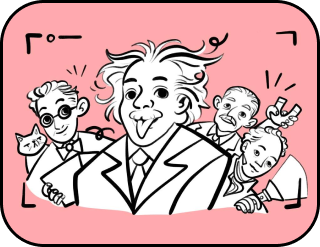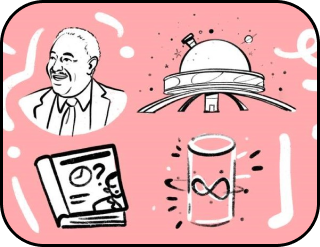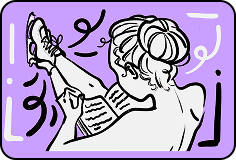A look into the dark depths of possession: science behind the supernatural
Note: The editorial team of The Global Technology firmly insists that this article is not intended to scare readers or make them believe in the not always pure intentions of supernatural forces. With this material, we only aimed to show the impact of the most well-known cases of possession in history on the development of medicine and other scientific fields. We still desperately believe only in what has been proven through exceptional scientific methods, but even for scientists devoted to science, the only true guide will always be the question mark.

“Demons only trouble those who trouble them themselves.”
From the book Sefer Hasidim, or The Book of the Pious
Possession by evil spirits is one of humanity’s oldest and most intriguing attempts to explain the mysteries of bodily and mental ailments. It is woven with history and culture, like a thread connecting ancient civilisations with contemporary scientific understanding of the universe.
Even in Sumerian texts, one can find references to “demons of disease” — mysterious beings believed to be the cause of all bodily and spiritual misfortunes. They were thought to hover over unfortunate individuals like dark ghosts. And if one looks into the Gospel, they can see Jesus casting out evil spirits and restoring inner peace to the afflicted.
Demonic Cradle
In various corners of our planet, “possession” has manifested in different ways — from the loss of control over one’s consciousness to rather ordinary desires. But more often than not, painful “peculiarities” were accompanied by corresponding symptoms: loss of control over the body, uncontrollable convulsions, and most importantly, changes in voice — when a sinister spirit suddenly appears, reminiscent of an old horror movie, and begins to ventriloquize.
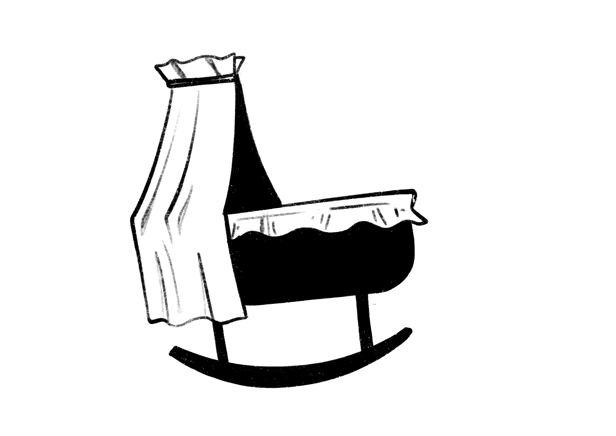
The findings of historians, like pieces of a mosaic, reveal that such stories have roots deep within humanity. Not long ago, archaeologists, digging through the dust of antiquity, stumbled upon ritual texts mentioning the exorcism of demons in Ancient Mesopotamia. Before the archaeologists lay a genuine “book of secrets,” full of magic, witchcraft, and creative experiments of exorcists, where real events were inscribed on clay tablets as if they were decorations for a play. And not all the experiments described in the book ended with a happy ending.
In those times, magic meant any unattainable and unpleasant activity, and priests who indulged in cruel rituals and witchcraft held esteemed positions in society. The Mesopotamians believed in supernatural forces as strongly as we love epic evening series; their lives resembled an engaging thriller where mysticism shattered reality.
It was there, in Mesopotamia, that temple schools emerged — the precursors of today’s medical institutions. The activities of these schools might evoke a slight smile today, but in their time, these temples were true centres of intellectual light, where priests wrote textbooks with the same enthusiasm as today’s students composing essays on “the psychology of communication.” Students immersed themselves in rituals for casting out evil spirits, practiced astrology, and mastered the art of healing through redemptive magic. Several millennia ago, temple schools could confidently be considered pioneers of medical education, where Sumerian comic books about the battle between good and evil served as genuine educational literature.
People of that time believed that demons and lost souls could penetrate a person, causing possession. And then the exorcist would take the stage, acting like a true detective, untangling the web of souls and symptoms. The key to healing was correctly identifying who stood at the threshold: malevolent demons or suffering souls unable to find peace.
An offended soul of a person in life could provoke in the possessed feelings of depression, nausea, chills, and weakness. The exorcism ceremony involved an entire ritual — from tasty treats used to lure the entity out, to fragrant herbs used to incense the possessed. The ancient world is remarkably fascinating, and the history of temple schools in Mesopotamia is just one of its few pages.
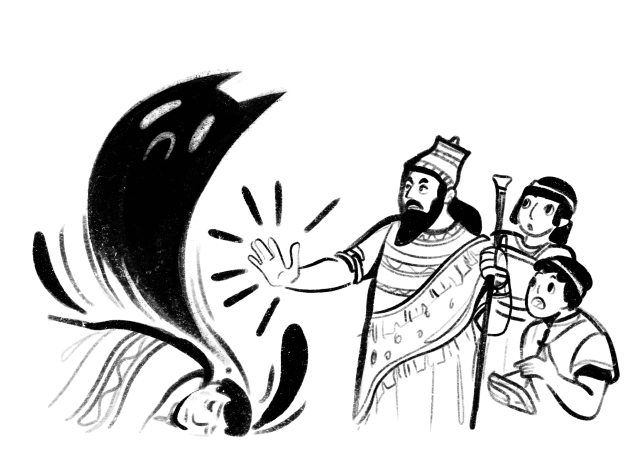
Prayers, Incantations, and Healing Baths
The methods for casting out demons varied significantly depending on the region: in Ancient Egypt, prayers were recited over the “possessed” interspersed with incantations; in Babylon, the afflicted were immersed in the waters of the Tigris; in ancient Greece, they were given holy water to drink. Shamans, priests, and sorcerers engaged in these practices. Over the centuries, representatives of religious movements joined them, and then the matter took on entirely different dimensions, making it impossible to rely solely on holy water.
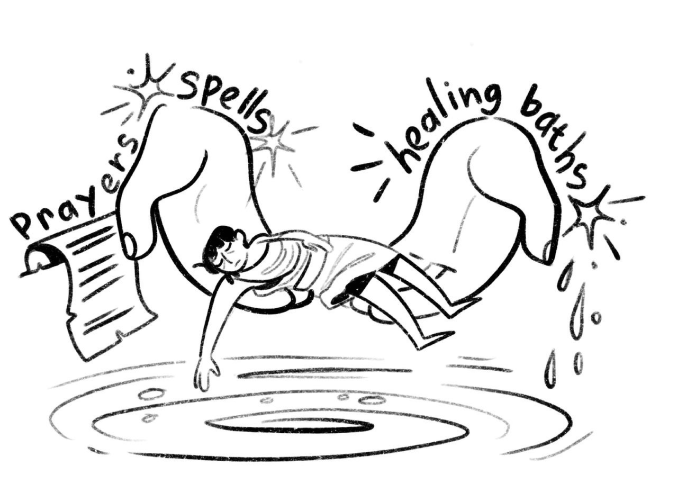
Medieval Struggle with Demons
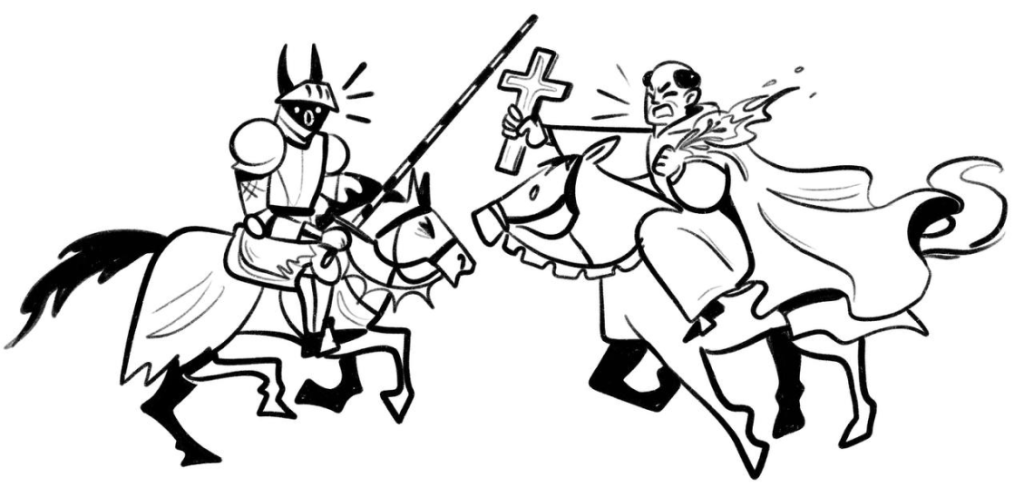
With the onset of the Medieval period, hatred toward the “possessed” became a monstrous norm. During this era, a palette of new concepts began to form, ranging from eccentricity to religious revelations. This led to a blurring of the fine line between madness and inspiration, making it difficult to discern
The methods for ridding individuals of demons began to resemble intricate tortures. Before the rise of feudalism, the belief that evil could seize a person’s body was primarily held by simple folk. However, from the 14th century onward, such views infiltrated the official church. Thanks to the advent of printing, all theories of possession spread rapidly throughout Europe.
In addition to the traditional recitation of prayers, exorcist priests often tied the “possessed” to a bed or chair, anointed them with oil and incense, surrounded them with fragrant herbs, and poured broths over them. The unfortunate individuals were often tortured to break the resistance of the demons. Many who underwent these monstrous rituals could not withstand the torment and died, which was considered a blessed outcome.
The belief in the reality of “possession” persists even today. It would seem that technological progress and mass education should have eradicated such beliefs; however, rituals that have not lost their brutality over the years and have become increasingly sophisticated continue to be practiced in various corners of the globe, even in civilized countries.
Over time, mystical narratives have only become more entrenched in human consciousness, and modern advocates of exorcism find new ways to reinterpret and adapt them for a new generation. With each new interpretation, risk and fear become merely part of a grand magical narrative, making audiences hold their breath and grip the edges of their seats tightly.
There are many examples of this: the cult classic The Exorcist, which shocked audiences at the time and left an indelible mark on cinema history. Horror novels depicting demons inhabiting people capture readers’ imaginations, immersing them in a world where good fights against evil. Characters teetering on the brink of madness become symbols of the eternal struggle.
However, most modern stories about exorcism have their roots in science and medicine — the question of possession has always sparked much discussion. Official science regards such phenomena with skepticism, considering them manifestations of mental disorders. For example, Sigmund Freud believed that the “demons” spoken of by the possessed were nothing more than projections of internal conflicts and repressed desires.
Unfortunately, many of those who were condemned and burned at the stakes were likely just suffering from mental illnesses — victims of the unknown fears of their time. Thus, throughout the history of humankind, the theme of possession remains an unsolved riddle that fascinates, terrifies, and compels us to look into the depths of consciousness.
Another Person
What are the true signs of possession? Exorcists assert that the initial signs may be barely noticeable, but over time they become clearer. A person who is genuinely influenced by supernatural forces may suddenly begin speaking in languages unknown to them or exhibit feats of extraordinary physical strength.

Sometimes, the possessed seem like a “different person” — their intelligence may dramatically increase, and the revelations they make often shock those around them. They may articulate facts they could not possibly know. Constant visions, nightmares, and paranoia ensnare such individuals in a dark reality from which escape seems nearly impossible. Behind these manifestations often lie deep personal suffering and internal conflicts.
The first thing that those around them notice is the sudden changes in behaviour. The person may experience hysterical fits and outbursts of anger, which abruptly shift to apathy and sluggishness. In some cases, hallucinations occur, indicating serious changes in the psyche.
A Pact with the Devil
Over a hundred years ago, in 1906, a mysterious story full of inexplicable phenomena unfolded in South Africa. The attention of the local residents was drawn to an orphan girl whose behaviour raised concerns: the girl often talked to herself, as if an invisible force were present with her.
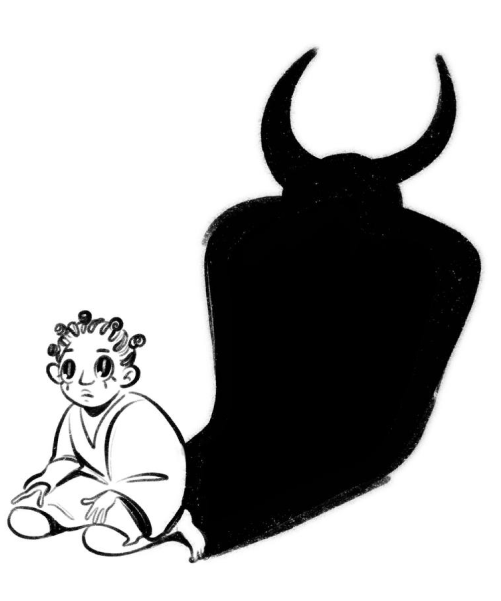
When school priests became involved, the oddities only intensified. The girl spoke in “foreign languages,” demonstrated miracles of clairvoyance, revealed secrets of people she had never known, levitated, and reacted negatively to sacred objects. Her behaviour became increasingly violent and aggressive until, finally, in a conversation with spiritual mentors, the girl confessed that she had made a pact with the devil himself.
This revelation shocked everyone. In the local church, two priests decided to conduct an exorcism session that lasted an entire day. They fought long and hard for the soul of the unfortunate girl, and, according to rumours, at one point, she even attempted to strangle one of the priests.
However, the exorcism session was successful — the girl renounced the devil. But her liberation was short-lived: a year later, the orphan shocked those around her again, claiming that she had made a second pact with the unholy. This time, the exorcism ritual required the priests to work for two consecutive days before they could finally free her from the sinister influences.
This mysterious story is shrouded in many questions and speculations, and it continues to stir the minds of paranormal researchers. What really happened to that girl? Was it merely a sinister spectacle, or did she actually confront a remarkable and malevolent being?
Exorcism Instead of a Psychiatrist
In the 1960s, 17-year-old Anneliese Michel from West Germany began suffering from seizures, but her devout parents saw the episodes as the devil’s work. The lack of medical treatment led to clinical depression, which further convinced Anneliese’s relatives of her “possession.” Ultimately, with the silent consent of her family and supposedly for the sake of purification, an invited exorcist tortured the teenager. For ten whole months, the child was starved and bound to her bed, but this only made matters worse: Anneliese became delirious and shouted incoherent phrases.

The story ended tragically: the girl died. An autopsy revealed that she had succumbed to pneumonia and dehydration, which had actually caused the hallucinations, delirium, and uncontrollable outbursts. After the teenager’s death and a subsequent court trial, doctors determined that Anneliese suffered from a complex form of psychosis.
Floating in the Air
The story of Ann Eklund and her alleged demonic possession began in 1912 and continued for several decades. It is believed that Ann’s father and aunt cursed her with the help of Satan, resulting in the 14-year-old girl behaving more than strangely, without any apparent reason. The girl hissed, threw blessed food, spoke in foreign languages, and even levitated at one point.
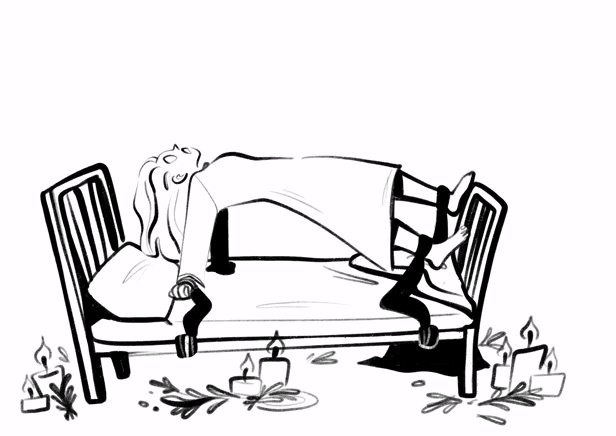
This case became one of the first officially documented episodes of exorcism in history and even influenced the plot of the 1973 horror film The Exorcist, directed by William Friedkin.
Despite the fact that the first exorcism session seemed to work, the nuns and priests of the convent in Earling, Iowa, claimed that the girl’s apparent recovery was merely the calm before the storm. In 1928, three more sessions were held at the convent, during which the girl resisted attempts to rid her of the demons with unprecedented supernatural strength.
Demon of Murder and Evil Spirit
Sometimes, exorcism can even provoke murder. In the early 1970s, Michael Taylor, along with his wife Christine, became a member of a Christian fellowship group where they practiced Bible study, attended prayer meetings, and shared worship experiences.
In 1974, Michael had an affair with another member of the group. After his wife found out about the affair, Taylor became erratic and violent, claiming that an evil spirit had possessed him. The local vicar and other members of the fellowship conducted a special exorcism session on him, stating that during the all-night ceremony, they “called forth and expelled at least forty demons, including demons of incest, bestiality, blasphemy, and obscenity.”
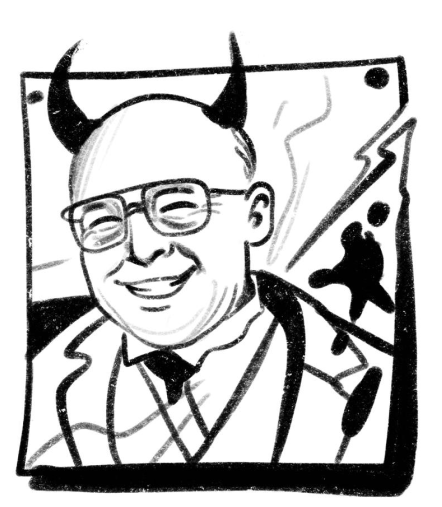
Ultimately, the members of the Christian fellowship sent Taylor home, confident that the ritual had helped him. However, their fears that three demons — madness, murder, and cruelty — still remained within him were confirmed the very next morning: upon returning home, Michael Taylor killed his wife and their pet dog. He was later arrested by the police while walking naked along the road, covered in blood.
In 2015, several teenagers in Argentina turned to a shaman in hopes of getting rid of an “evil spirit.” During the ritual, one of the teenagers fell into a trance, began speaking in a different language, and exhibited aggression. The mystical ritual exacerbated deep-seated psychological issues, and a professional assessment of the teenager’s condition revealed profound insecurity.
These examples illustrate the range of symptoms and behaviors associated with various forms of possession and trances, lending reality to this phenomenon.
Evil Spirit or Ordinary Narcissist?
Science offers various explanations for possession based on psychology, neurology, and sociology. In a medical context, the term “demon possession” or “demonomania” is no longer considered a diagnosis. The International Classification of Diseases includes a mention of the disorder: “Trance and Possession,” characterized by a temporary loss of personal identity and a complete lack of awareness of surrounding reality. It is also clarified that “some actions of the patient may be controlled by another personality, spirit, deity, or some ‘force’.” This can encompass various neurological and mental disorders: epilepsy, bipolar affective disorder, Tourette syndrome, and even dissociative identity disorder.
Modern psychiatry sheds light on the phenomenon of possession, viewing it as a form of mental illness. Conditions such as schizophrenia, bipolar disorder, and psychosis become fragments of the complex mosaic of the human psyche. Why do sudden changes in behaviour sometimes lead to such dramatic consequences? The answer may lie in chemical imbalances in the brain or traumas experienced in the past. Research shows that individuals who exhibit signs of possession may have abnormalities in the temporal lobe — the area responsible for processing auditory and tactile perceptions. This explains why hallucinations and strange changes in behavior occur during moments of intense emotional stress: the inner world of these individuals is torn apart, and sometimes, to be heard, they repeatedly confront their inner demons.
Interestingly, at the root of such states often lie narcissistic traits or low self-esteem. Patients seek to draw attention to themselves, as if suffering can express their unspoken desires. According to Sigmund Freud, the “demon” that torments the possessed is a manifestation of suppressed internal conflicts and unmet needs, which emerge in extraordinary, unpredictable, and sometimes even monstrous actions.
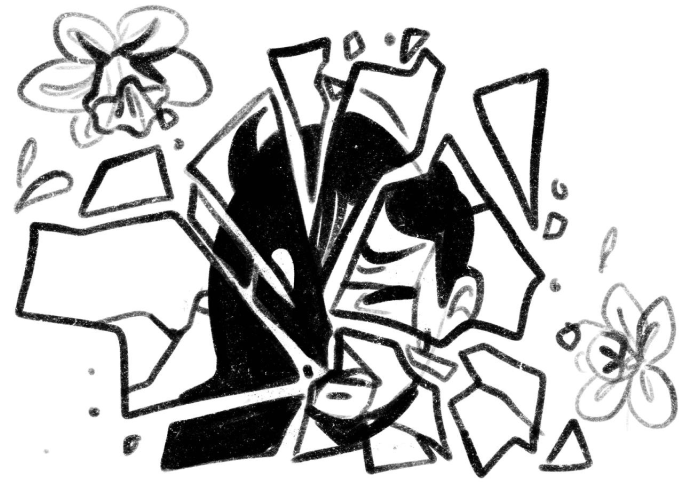
The causes of possession are inextricably linked to cultural and social context: in societies with aggressive religious traditions, such cases are often perceived as interference from supernatural forces. However, secular society tends to attribute such conditions to mental disorders, stripping them of their mystical aura. Each case is like a reflection in a mirror, where one can see the profound aspects of human psychology, unique cultural traditions, and the mystical mysteries of the soul and body.
It is believed that Salvador Dalí experienced unexplainable episodes. The famous artist underwent an exorcism ritual in 1947. Brother Gabriel Maria Berardi, who conducted the exorcism session, received one of Dalí’s works as a token of gratitude.
At the Intersection of Science and Mysticism
Personality deformation, seizures, and unnatural behaviour are typically associated with mental illness. However, individual cases of so-called “possession” remain unexplained even by medical professionals.
Julia was born in the United States and, by the time of her torment, had crossed the thirty-year mark. A determined career woman, she knew neither family nor children, and this independence suited her well. She was raised in a Catholic family but gradually turned away from them, leaving behind the religious rituals absorbed since childhood.
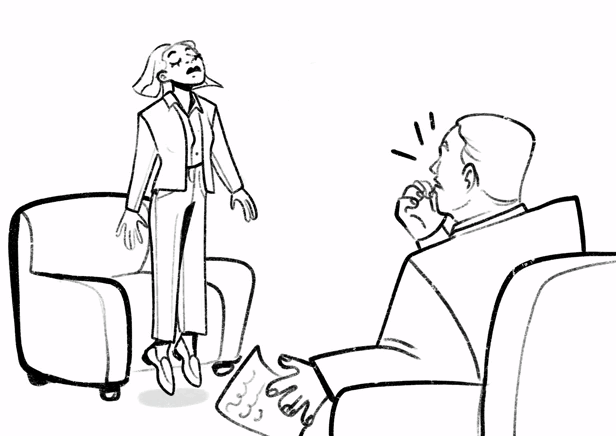
Julia began to take an interest in paranormal phenomena, gradually expanding her horizons to magic, spiritualism, and even satanism. She often participated in dark rituals, and one such occasion proved to be fateful.
The girl turned to a priest, who initially advised her to see a psychiatrist because her unusual behaviour was becoming increasingly apparent. Julia would curse in Latin and astonish with her clairvoyant abilities, entering trances in which she described places on the other side of the world and predicted people’s actions.
A psychiatrist, Dr. Richard Gallagher, came to her aid. However, the skeptical doctor soon found himself caught in a whirlwind of the inexplicable: with each session, his doubts about the established diagnosis grew, and he began to suspect that Julia might indeed be possessed.
The doctor reached an unsettling conclusion: this was not a medical case. Yes, some of the patient’s symptoms could be classified as mental disorders, but other aspects, which she physically could not have influenced, went beyond the ordinary. For example, during the experiment, the room would alternately freeze and scorch with heat, and objects would fall off the shelves on their own. The most impressive occurrence was when the girl levitated, suspended in the air for a full thirty minutes. Explaining this fact scientifically is very challenging. However, it is possible to speculate: perhaps, under the influence of unknown factors, she unlocked hidden abilities. Scientifically, it is known that a person’s mental and physical capabilities are not fully realised. Who knows, perhaps, in moments of intense emotion, a person can resist gravity.
Shortly before her death, Julia expressed a desire to meet with the doctor to share her story and warn others against the dark magic that had begun with the ritual in which she played the role of high priestess, invoking the demon Foras.
Julia’s story remains a mystery. Here, science and mysticism intersect, leaving room for uncomfortable questions. It is an example that prompts even the greatest professionals and skeptics to ponder theories that may not be entirely scientific.
Not Science, but a “Parallel” Theory
Entities are inhabitants of parallel worlds that possess the ability to penetrate our reality without hindrance. While only the chosen may see them, every person interacts with them. Entities can assist, harm, guide, confuse, and inhabit bodies on various energetic planes. Entities can be broadly categorized into two types: self-sufficient ones, which draw energy for their existence from the Universe, and those that feed off humans.
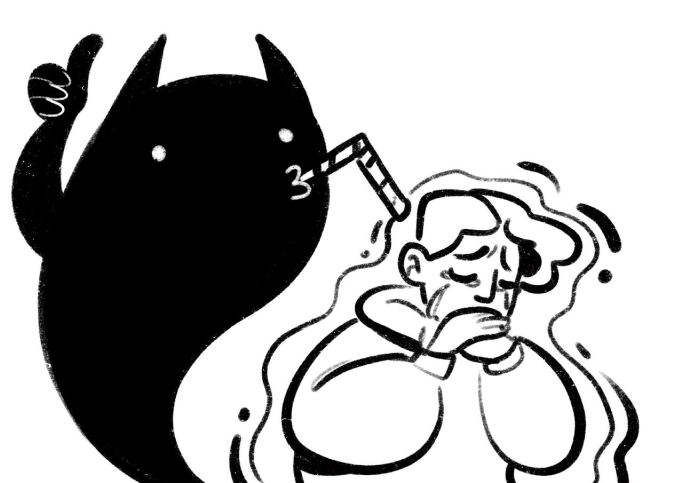
But what does this have to do with possession?
Our feelings, emotions, experiences, and thoughts are all energy that we receive from the environment and process according to our level of awareness. It is structured so that simple entities feed on what is produced at the output. The lower the frequencies of our emotions (hurt, anger, hatred, irritation), the more low-frequency “energy parasites” we attract. The entity feeds and grows, while the person, on the contrary, withers and fades. Gradually, the entity takes root in the person’s subtle bodies and aura, beginning to control them not only mentally, by instilling a particular behaviour and changing their lifestyle, but also physically. The entity’s goal is to obtain the maximum amount of low-frequency energy, which is why it is beneficial for the possessed person to experience and transmit negative emotions. Possession occurs when a person can no longer resist these energetic parasites.
Should We Be Afraid of Them? Practicing magicians say that one should not be afraid of astral entities or harbour negative feelings toward them because these entities are part of the overall world and fulfil their functions. It is enough to maintain awareness, engage in spiritual growth and development, and not deviate from one’s karmic tasks to be protected from the intrusion of foreign energetic subjects.
Trusting the higher mind is great wisdom, and everything that happens does so with its permission. Yes, we are mere specks in the boundless cosmos, but everyone has their mission on Earth. Energetic entities from parallel worlds are not enemies but rather workers in the executive service of the Universe’s control. This theory is undoubtedly fantastical, but like any other, it has the right to exist and be studied.
A New Reality for Spirits and Humans
Continuing with the theory of energy, it can be said that all religions converge in the belief that demons and jinn are a true threat to humanity. The mystery that troubles many philosophers and theologians is: how can the immaterial threaten our physical bodies? Ghosts that inhabit people do not consume food or blood and do not decompose from the inside. But what do they feed on for their existence? Of course, energy. The greater the suffering of the victim, the more energy they produce. It is now clear why public burnings were so popular in the Middle Ages: a person burning alive emits an incredible amount of energy. The vampire simply needs to absorb this force and leave their host’s body at the very last moment.
Over time, spectators became accustomed to public executions, and the fear for their lives disappeared. This change negatively impacted lower-caste energy vampires, forcing them to seek new sources of sustenance. Public burnings of the possessed became merely a page in history, belief in demons, evil spirits, and possession began to wane, and in civilised countries, it almost disappeared.
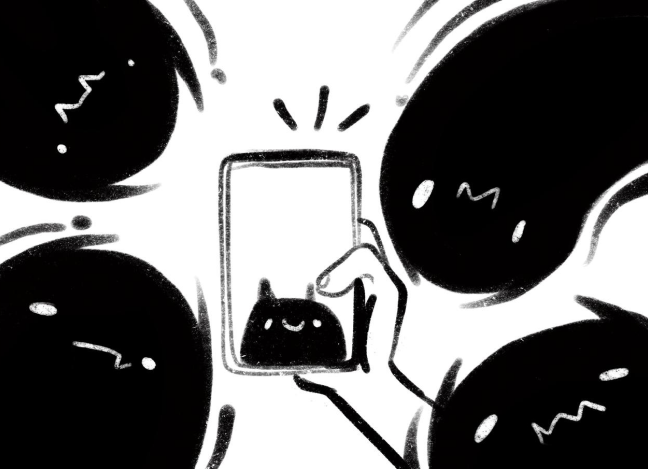
In place of possession arose a cult of virtual violence and an inexplicable fear of a future full of crises, ruin, and inevitable “end times.” Perhaps we have not yet realised that we find ourselves in a new reality, where, despite the disappearance of old fears, new ones arise. Energetic clumps and parasites are seeking new ways to feed on our life force, searching for their new victims and spiritually weak minds.
The phenomenon of exorcism is not just a page in history or a surefire script for movies; it is a living myth that continues to evolve. Mysteries, paradoxes, and incomprehensible clashes of passions make such phenomena eternal and timeless, attracting the unconscious mind like a magnet.
Who knows what secret corners of the human soul or unexplored spirals of parallel energy worlds are still waiting to be discovered?
The Einstein-Rosen bridge? We’re building it out of facts.
Thank you!


